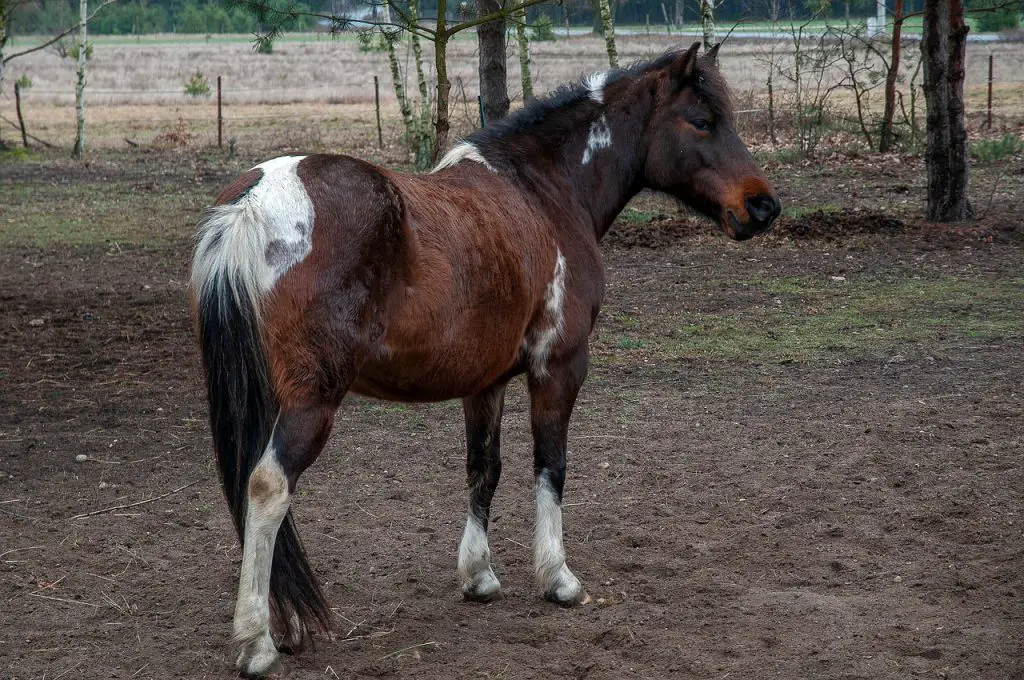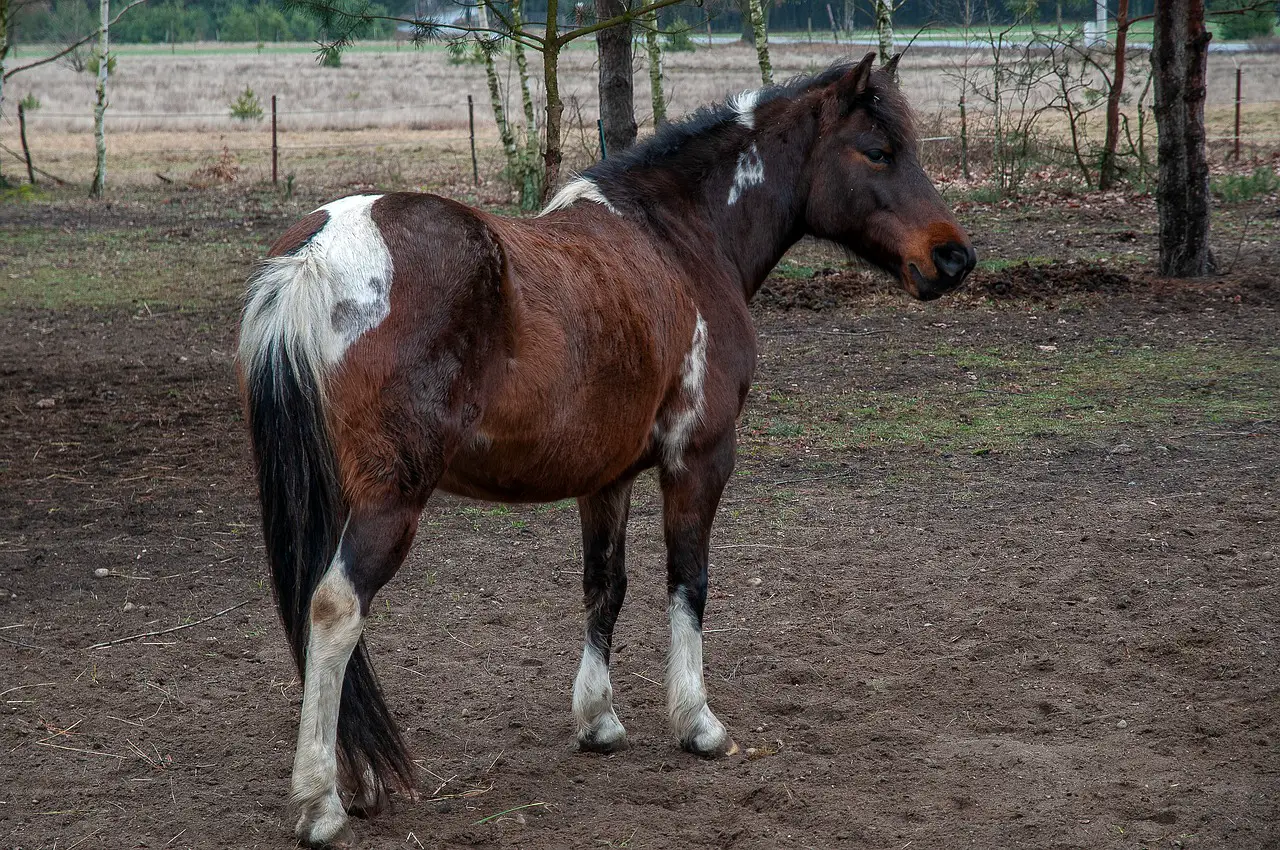Last Updated on March 11, 2022 by Allison Price
Windpuffs can be described as fluid-filled, soft enlargements that occur at the side of the fetlock joints towards the rear. These swellings can range from a long-standing, symptomless condition with no soreness and lameness to more severe conditions due to recent injury.
Scott McClure DVM, Associate Professor Emeritus of Equine Surgery, Iowa State University says that these enlargements are caused by extra fluid in the flexor tendon skin.
McClure states that the first question we ask is “Whether the horse is stocking up or has a windpuff.” Some horses may experience swelling in their lower legs (edema), especially after prolonged standing, or exertion. This can sometimes look like a windpuff.
Poor circulation is what causes the swollen leg. Usually, after the horse moves and exercises, this swelling will disappear.

A windpuff is fluid within the tendon sheath that doesn’t disappear. However, the horse that stocks up has caused temporary edema to the lower leg. Fluid in the joint is another common cause of swelling. He says that in this case, the swelling or filling is located ahead of the suspensory ligament. It’s also around the front of your joint and not toward the rear.”
Gary Baxter (VMD, MS), Hospital Director at The University of Georgia in Athens says that windpuffs are often misunderstood. Many people mistakenly believe they are swellings of the joint capsule. However, the most common definition for a windpuff would be a stretched tendon heath. This is where the digital flexor sheath wraps the two tendons that run around the backside of the fetlock.
Tendons are especially lubricated for smooth movement, particularly when they slide over hard surfaces. A hose-like sheath is used to protect the tendon. It contains a small amount lubricating liquid. The sheath also has a synovial liner, which is similar to a joint. This swelling is usually a sign that the sheath, or another part of the sheath, has been stretched or damaged and has created more fluid. Because the “container” has been stretched, the sheath bulges. Proper lubrication is only possible if the larger pocket remains full of fluid.
It may grow in size over time and may not disappear completely. Windpuffs are common in horses, particularly on the hind legs.
Most windpuffs don’t cause pain. They simply add fluid to the air, creating soft swelling.
McClure states that if there’s any heat, pain, or lameness with the swelling it is a sign of something more serious.
Windpuffs can be caused by trauma or acute injury. The tendon sheath may be stretched, which allows for fluid accumulation, but the horse will not become lame.
McClure states that swellings are not usually a problem. McClure says that if the horse responds positively to a flexion test or shows signs of heat, pain, or lameness, it could indicate inflammation and damage to tendon sheath.
To determine the best treatment, you will need to get a diagnosis.
Baxter states that symmetrical swellings can help determine if windpuffs pose a problem. Windpuffs can occur on horses’ hind legs or all four. “If they are symmetrical I am generally less concerned. Most horses only need a little filling of the sheath. There is no heat, soreness, or lameness. Many horses are trained to have some filling of the tendon sheath and others have filling of the fetlock joints.
However, if the swelling suddenly appears, it is worth checking, especially if the legs are the same. If one leg becomes puffier, the other will also become more puffy.
Baxter states that if they aren’t symmetrical (e.g. a little fluid in one leg but much more in the other), it usually means there’s a problem such as an injury to that leg.
Owners should be aware of any changes in size if a horse suffers from chronic windpuffs.
Baxter states, “That’s when they should be concerned about it rather than just dismiss it as an old windpuff.” There may be fluid buildup on one side and not the other, but this is not necessarily indicative of lameness. However, lameness does not necessarily mean that there isn’t active inflammation or potential injury in the side that’s more swollen.
Baxter recommends that such cases be referred to a veterinarian for evaluation.
He says, “We might find injuries to either the superficial or the deep digital flexor tendon.” “We have improved our diagnostics to find these lesions with the ultrasound, arthroscope or MRI. It is possible to find anything within the tendon sheath which may be contributing to excess fluid. This can help us understand why there is more fluid in one of ours.
McClure suggests that conformity and chronic conditions could play a role.
McClure states that windpuffs can sometimes be seen in horses with a chronic tendon issue, where the fetlock joint drops toward the ground. This can be caused by chronic flexor tendon problems or degeneration. Windpuffs can be caused by horses that drop too low in their ankles when they place weight on their legs.
Although they may not appear lame initially, this could be a sign that something is worse. McClure says that further examination may reveal degeneration of the suspensory and flexor ligaments. This is an even more serious problem.
Many horses that compete in athletic events end up with windpuffs from stress and strain, but no major damage. These enlargements are only a cosmetic issue.
McClure states, “Even though the horse may not be lame, the fact that the windpuffs appear is an indication of excessive strain.” It should be monitored and watched. It might seem like a small synovial effusion today, but it could become more serious, tendon disease, or annular ligament disease down the line.
McClure states, “If a horse is suffering from windpuffs, you should have it examined by ultrasound to examine the digital flexor tendon, annular, suspensory, and superficial areas.” If there are serious problems, you can see it with ultrasound.



